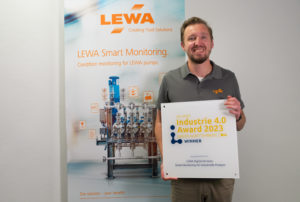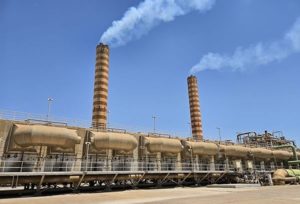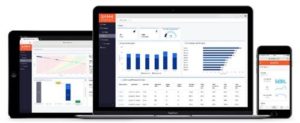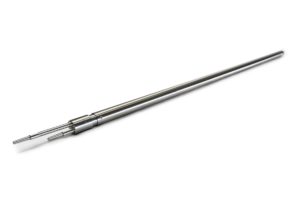News from the IFAT 2010 – Part 4
In the third part of the IFAT report impeller.net informs about innovations in the field "Control and Monitoring Systems".

The Sensor PTM from ASV Stübbe consists of a chip that combines pressure and temperature measurement. The sensor is available in a housing made of PP or PVDF. The transducer is shielded from the medium by means of a CrTa coating and a static seal. The signal is transmitted to the output units by the proven ASV CPU. This electronic unit can either be equipped with a 0/4...20mA current PCB or alternatively with a relay PCB with 4 freely programmable outputs.
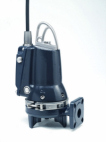
Grundfos integrates the monitoring system AutoAdapt in sewage and wastewater systems. So external level sensor can be omitted as all sensors are already integrated in the pump. The pump aligns itself to the respective conditions during the first installation and adjusts fully automatically. This simplifies the installation, initial operation and of course the operation itself. Costs for installation and startup decrease by approximately 50%. Due to the AutoAdapt function the pump not only adjusts itself automatically to the given conditions in the shaft, it also recognized further operating pumps placed in the shaft. Up to 4 wastewater pumps per pit can execute a full automatic calibration of the start/stop level.
The flow-dependent pressure management through Demand Driven Distribution (DDD) by Grundfos should reduce water loss at the suppliers. The idea behind is to reduce or even eliminate water hammer by decreasing the flow velocity and smooth pressure build-up and suppression. The energy consumption of the pump will be optimized and water loss minimized by 15%. Heart of the system is a new generation of multi-pump cascade control “Control MPC”. Up to 6 pumps can be controlled per internal databus energy-efficiently through a PI-controller on microprocessor base. The system is characterized by a significantly high quality in the output signal. Due to the 4-level navigation the system is easy to use. By means of the integrated webserver it is possible to access the control from an external PC. With the Control MPC, a too high pressure is compensated by a proportional pressure control, in which the nominal value is adjusted to the current flow rate.
 Homa presented a new monitoring system for early failure detection and reducing repair cost of submersible pumps and systems at the IFAT ENTSORGA 2010. HOMA VICON is a new failure monitoring device that detects and monitors all vibrations arising in a pump station and provides a detailed analysis of failure origin. HOMA VICON detects vibrations with a digital acceleration sensor inside the pump and processes data and frequency spectra, which allow to assign specific kinds of vibrations to corresponding mechanical failures.
Homa presented a new monitoring system for early failure detection and reducing repair cost of submersible pumps and systems at the IFAT ENTSORGA 2010. HOMA VICON is a new failure monitoring device that detects and monitors all vibrations arising in a pump station and provides a detailed analysis of failure origin. HOMA VICON detects vibrations with a digital acceleration sensor inside the pump and processes data and frequency spectra, which allow to assign specific kinds of vibrations to corresponding mechanical failures.
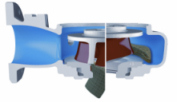
For over 10 years, the Flygt N-pump has been one of the most cost-effective, clog-free wastewater pumps on the market. ITT Water & Wastewater is now introducing an advanced development in the hydraulics of the N 3085 series. An N-impeller that lifts automatically as required – the Adaptive N-impeller. The innovative, patented adaptive function of the N-impeller enables the impeller to move axially so that solid substances pass through the impeller more quickly. The Adaptive N-impeller intelligently adapts to the prevailing conditions and delivers reliable operation. Clogging and blockage are prevented and wear is reduced as hydraulic, bearings and seals are conserved. The Adaptive N-impeller intelligently adapts to the prevailing conditions and delivers reliable operation.
A technical highlight among the products presented by KSB at IFAT ENTSORGA in the field of water transport is a new, competitively priced pump monitoring unit. The product named PumpMeter comprises pressure sensors as well as an analyzing and display unit attached to the pump. It measures suction pressure, discharge pressure, differential pressure and head. The measured and calculated values are shown in alternation on the user-friendly display. A typical pump curve graph illustrates in which range the pump is currently operating. So the pump user will see at a single glance if the pump is operating in an efficient and cost-saving manner or if its availability is jeopardized. In addition, the system continuously analyses the pump operating data, establishes a load profile and makes the operator aware of energy saving potential that could be leveraged by using a variable speed system. The system comes factory-mounted to the pump, thus making commissioning straightforward. The new monitoring unit also simplifies commissioning of both the pump and the retrofitted variable speed system, because the pump’s operating parameters are continuously displayed. The system replaces the pressure gauges upstream and downstream of the pump, the pressure transmitter for the control functions, as well as any additional monitoring equipment. Via standardized interfaces the data collected can also be made available to a central process control system.
The RPR Control by Sondermann offers an electronic monitoring of pump processes by measuring the motor power input. Thereby, the operating state of the centrifugal pump can be determined. Disturbances are recognized early and the availability of the system is increased. An integrated operating hours counter shows the due system maintenances. The system can be easily retrofitted to existing plants without installations in pipelines.
Preview/Thumbnail Picture: Research + Education Area (Copyright: AlexSchelbert.de)
Source: Messe München GmbH

